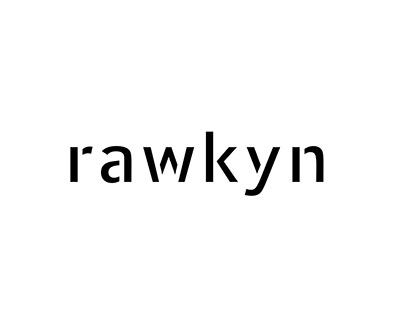Deep conditioners come in many different types, and curly hair comes in many different types as well. It’s definitely possible to deep condition in a way that is “wrong” or, at least, that doesn’t maximize the potential benefits of deep conditioning. Here are a few deep conditioning mistakes you might be making with your deep conditioner. Before continuing this blog, If your unfamiliar with protein & moisture treatments, we recommend reading Protein And Moisture Treatment For Curly Hair.
1. Not leaving the deep conditioner on your curls as product instructions recommend!
It is very important to follow the instructions of every deep conditioner when it comes to how long you should leave it on your hair. Depending on the formula, your hair needs to sit on the product for only five minutes in order to get the desired results. Sometimes, you may need to leave the mask on for between 15 and 30 minutes. The common misconception is that the longer the deep conditioner stays on your hair, the more effective it will be and that the longer you leave it on, the better it will work. However, it is possible to get the complete opposite of what you would expect!
In most cases, these products are much heavier than the usual products you use daily; they are not designed to sit on your hair for a long time. Make sure you do not leave a deep conditioner in your hair overnight or for longer than the package recommends, as this can result in over-conditioned hair or product buildup in the hair.
2. Lack of deep conditioning on a regular basis.
It is better to do deep conditioning regularly than do it for a long time every single time. It is recommended to deep condition your hair approximately once a week for many hair types – not too often that it weighs down your hair, but just often enough to replenish your hair and prevent damage to your hair. Depending on your hair type, you may find that you need to deep condition more frequently or less frequently. It may be necessary to deep condition your hair twice a week to return to normal if it is excessively dry and damaged, for example. On the other hand, some curlies only need deep conditioning twice a month while others may only need it once a week.
3. Not Using The Right Amount Of Product.
Using too little product isn’t the best approach at this point! Use As much product as your hair needs. Be sure to coat each and every strand with the deep conditioner. You should pay particular attention to your hair’s ends since they are often the most fragile and the most damage-prone parts of your hair.
4. Changing The Product Application Priorities.
Apply deep conditioner only after you have shampooed your hair, never before. The shampoo is a cleanser that cleans the hair and (in some cases) strips it of moisture, so in essence, it undoes all of the moisture-locking power that the deep conditioner has. While deep conditioners, on the other hand, restore moisture to the hair and rebalance it after it has been shampooed. Deep conditioning your hair before shampooing is technically considered a “pre-poo” treatment. There is no doubt that pre-pooing your hair is excellent for your hair, but it is not considered part of your regular deep conditioning routine.
5. Using Inappropriate Hair Care Products.
Are you aware of the type, porosity, or health condition of your curls?
If not, the following paragraphs will provide you with some background information so you can choose the best products for your particular needs.
You should use a lighter deep conditioner for looser, thinner hair types (types 2 and 3a). On the other hand, curls with tighter coils (type 3b and above) may benefit from a heavier deep conditioner.
Curl type isn’t the only factor to consider. In addition, consider whether your hair has a high or low porosity, whether it has been chemically treated, and whether it is damaged or brittle. Finding the perfect deep conditioner requires finding out what your hair likes because each deep conditioner is designed to nourish your hair in a particular way.
Most deep conditioners fall into two categories:
- protein-based
- moisturizing-based
Hydrolyzed protein in protein-deep conditioners rebuilds and strengthens your hair strands. These deep conditioners are essential to your hair routine for damaged curls. But note that you don’t need to use them very often. On the other hand, moisturizing deep conditioners are great for preventing dryness of the hair and keeping it healthy because they intensely condition the hair.
If you have found the above tips useful and led you to edit your routine, please share them in the comments. This can be very useful for those who have your hair type. Have you ever made the mentioned deep conditioning mistakes? Please share your experience with us in the comments.
Frequently Asked Questions About Deep Conditioning Mistakes:
1. Not leaving the deep conditioner on your curls as product instructions recommend!
2. Lack of deep conditioning on a regular basis.
3. Not Using The Right Amount Of Product.
4. Changing The Product Application Priorities.
5. Using Inappropriate Hair Care Products.
> Protein-based
> Moisture-based
First, you should read the product application instructions, but generally, you should let it stay on your curls for about 30 minutes or more. Deep conditioners are typically heavier than rinse-out and leave-in conditioners. They’re designed to help repair very damaged hair and hydrate very dry hair. You should put deep conditioning in your curly hair care routine about once or twice a month.
Leaving deep conditioner on your curl too much can result in can result in over-conditioned hair which may cause your curls to become fragile and lose their elasticity over time or product buildup in the hair.
You should deep condition your hair twice a week if you have dry, damaged, or color-treated hair. As your hair strengthens and the texture of your hair improves, cut back on deep conditioning to once a week or twice a month to avoid over-conditioned hair and product build-up on your scalp.




















